|
|
Djaimox
Projects | Projets | Projekte |
Djaimox
Shop |
Djaimox
Blog |
|
|
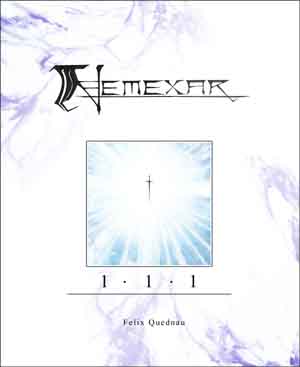 Making a Graphic novel |
| Step
0. |
Before you start... |
|
|
 |
Before you start drawing those
pages: 1- Keep in mind that your GN will take at least 1 year to complete if not more. 2- If you have a series of graphic novels in mind, you might want to have book 2 ready for sale, and be working on book 3 before you sell book 1 |
| Book 1 on sale |
Book 2 ready to be sold |
Book 3
being worked on |
Books 4
and up still in rough draft form |
  |
  |
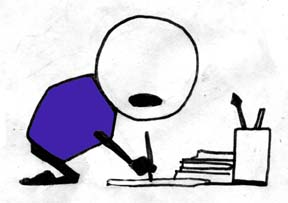 |
    |
| Materials |
Materials I use to make my GN |
- Typical art material (paper, pens, ink, white-out, etc...) - computer - scanner (11x17 scanning surface is the best) - imaging software (photoshop, piantshop pro,etc..) - spellschecking software -external hard drive |
| STEP
1. |
Build yourself a solid base |
| Pre-production phase The pre-production phase can be broken down into 3 distinct blocks |
 Block A: the story |
Block B character design |
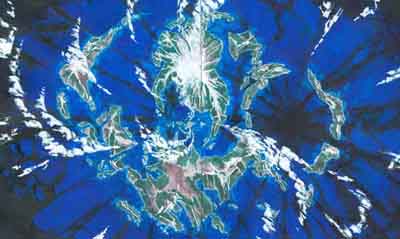 Block C environments and color range |
These 3 blocks should be worked on simultaneously.
|
Let the character design influence the story. Story and dialog can influence certain visual sequences. Environments and color range can inspire a dramatic shift of events in the story, etc... In the end, with these 3 building blocks you will create the rough draft of your graphic novel (step 2). |
 |
Block A The story |
| Organising your ideas Sources of Inspiration Create a W diagram of the whole story arch This is an event driven version of the story. What event happens when and in what order. If you have a series of novels in mind, you might want to write a quick outline of the whole story arch before starting your first novel. In the case of Nemexar I planned out a story arch of 33 chapters. Create a W diagram of character evolution This is a character driven version of the story. How the character reacts to the events in the story and evolves because of them. Break up the story arch W diagram for each chapter. Break up the character evolution W diagram for each chapter check out my storytelling section for more tips. |
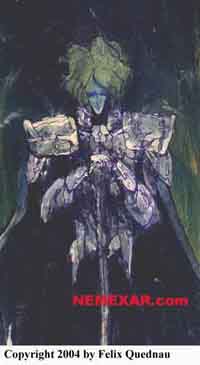 |
Block B Charater design |
| Create: Body (side, front, back) Face detail (front ,side, back) Weapons and other equipment Sometimes the character comes first. And then you get an idea for the story. But keep in mind, the story is more important than the character design. Of course, if you have an interesting character design, readers will be more easily attracted to your Gn. But readers walk away from nice looking characters with uninteresting stories. What makes a good character desing? Honestly, I don't know. You can check out some personal observations in my elements of desing page |
Extra tip: sculpture  
 Sometimes it helps to have a 3d representation of your character. Sculptures come in really handy when drawing a character in a very specific angle or when its time to do shading. The sculpt doesn't have to be perfect. Just enough detail to help you figure out where everything goes. Cloth on a 12 inch articulated action figure is great when it comes to drawing drapery. Check out my sculpture section for more tips. |
 |
Block C Environments and color range |
| Environments:
Create conceptual images of buildings and places where the story takes
place. Sometimes you might need quick 3d representations of these. Color range: what colors will be used in certain times and places in the stroy. |
| Step
2. |
Putting the building blocks together and making a rough draft of the whole thing |
|
 |

|
| (nemexar chapters 1-33) |
before making your work presentable to the public. once you've got a story and your characters you can start building your rough draft. its a big pile of papers on which you,ll have quickly scetched out what you want the whole thing to look like. (sort of the equivalent of a stroy board in the movie industry.) once the rought draft complete, use it as a guide to build your official version (step 3: the production phase). as you build your rough draft you will most likely be led to modify things in your story, or reajust the character desing or add something to the environment in which the story takes place. this is normal. if you let it happen, your graphic novel will sort of start writing itself. you will become a witness to a story that want to come out through you. build your rough draft in multiples of 32 (16/16) |
|
| (nemexar chapter inside) |
rythm is the way you tell your story. the way you place the pictures and text on the page to keep your reader hooked rythm is extremely important more important than the artwork comics books with great rythm: blam! hellboy, scud. tmnt leonardo solo adventure+ no. 10, akira, lone wolf and cub |
|
| (nemexar chapter inside) |
printshops print on big sjheets on mwich they fit 16
pages on one side, 16 on the other |
|
| Step
3. |
The production phase (turning your rough draft into something presentable to the public) |
| |
|
  + + |
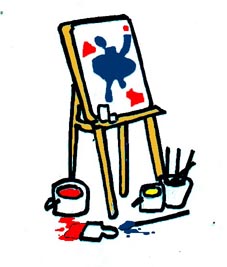   
|
|
Here things become personal. You can do
all your artwork on a computer. You can do it on paper and then scan
it. You can do it in black and white. You cn do it in color. It's all
up you and what you want the final result to look like. Remember: the computer is a touch up tool. Do not expect the software to hide your mistakes. Make your artwork as perfect as possible before scanning it. |
|
My own GN production process looks somewhat like this: 1.a: draw forground elements 1.b: paint backrounds 2.: scan images 300 dpi 3.a.: build up pages 3.b: add visual effects 3.c: add dialog and sound fx 4. a.: correct visual errors 4. b.: correct typos |
|
| Step
4. |
printing the book at home |
| before you make a major investment in printing
a high quality version of your book, try printing a section of the story
on your home printer (maybe 30 to 50 pages). This will give you an idea
what creating an official version witll be like. Do you find yourself
spending alot of time drawing in the details of the characters? maybe
you need to simplify their design alittle bit. do you find it takes too
much time doing your work in color maybe shift to black and white... once this home version is done, make the necessary reajustments to your rough draft, character design and environments before moving on. |
image size is important. build it so the reader can get lost in the picture. it'll help pull the reader into the story find out how many copies you need to print vs the amount of money you need to fork out. make sure your colors come out properly, makes sure all spelling mistakes are corected, stellar cover is a must make your book stand out |
|
| Step
4. |
printing the book at a printshop |
This is where i'm at.
so, for more advice, visit the remind website for more info for this section
| comics and graphic novels on the web: komikwerks.com ninjaturtles.com >www. evalbum.com/build#motor |
commercialisation, marketing extra tips: - make a buisness plan - managing sharks and wolves copyright issues marketing and visibility |
Back to workshop page |
|
 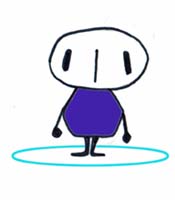 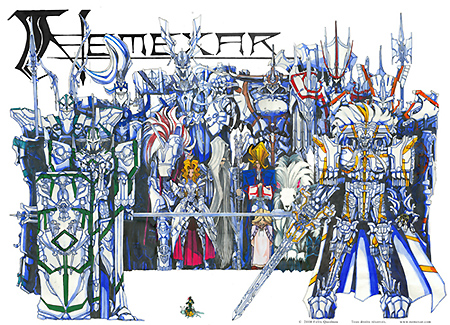 |
elements of desing page stuff i prefer stuff that looks good even if it is old (dragonball (1985),akira(compare the colour and BW versions), khai nielsen1914, abreybeardsly 1919, lionel feninger kinderkids 1906 windsor mckay1905,franquingaston lagaffe, fredphile,mon)
stroytellming stuff dialog and text
your story will be conveyed throught the actions of your characters
and their speach.
so, study dialog in movies, t.v.shows, plays.
I recommend:
- plays by Harold Pinter
- and any Woody Allen movie.
- listening to how people talk.
Try to keep the dialog in your story as natural as possible. This is more
difficult than it sounds.
recomended readings: getting things done david allen, 1001 ways to market
your book john kremer
e-book publishing, print on demand
get media coverage. send out 200 copies to getmedia attention
add something to your website once a week
www.comicpress.com
online store paypal yahhoo
sustained marketin effort
push your stuff into spotliht everyday
ebsite should have:
-who are you
-examples of work
-contact information
regularly updated blog
online store ebay,paypal,yahoo,anmazon
pub google adds-sapin de noel
site de jouet->pub de jouet
blog facebook, or titter
youtube mash up amv cmv
partager vos truques conseils comment vous avexz regler vos problemes
3 strategies: maison edition direct, auto edit->m.d'e, auto editi->self
distribut
getting it printed eric henly mark beach
buying bookprinting: 28 page pfdf for 19.95
xeric foundation.org
20%should cover advertising and makingfabrication
personal finance fo dummies
self publishuin manual dan poynter
graphic desing fo dummies
bookmacking marshall lee
contact-3biuisness days
patyment reminder-3-30 days
non pay7ing bidde alert 7u-40days
request final value fee credit- ithin 60 days
non paying bidder arning renmoval- within 9i0 days
auto edition avantages controle total, plus grosse marge de prodfit sur plus
petite quatite, mieux adapte au chanement cause par intenert etnouvelles technos
inconvenients: tu dois tout faire tout seul
maison dedition: predns les decision final par rapport au prodyuit
5-10% apres repris ses couts
soccupe de promouvoir le produit
submvention disponible qui sine ensuite redistribuer au createur
marcel barbeau donne une oeuvre a un ami
le fils de son ami revend l<>oeuvre 85000 $
bdeiste thierry labrosse.com


